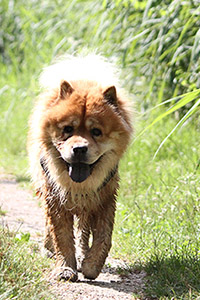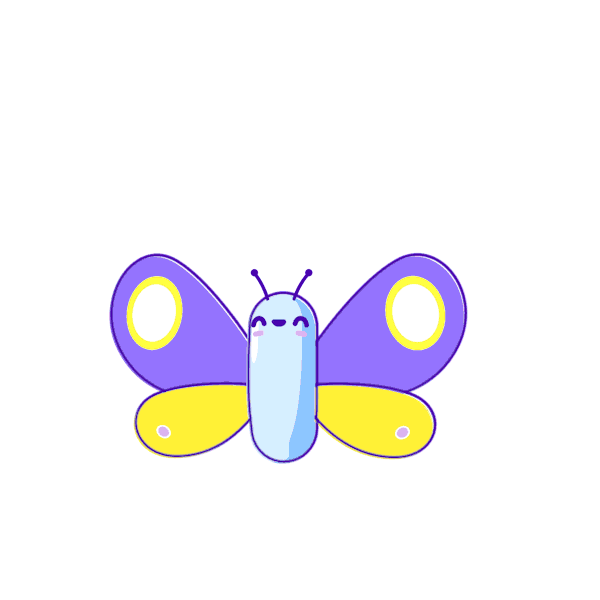| Annonces |
A propos du Forum
Nous tenons à préciser que ce forum a été créé dans le but de vous faire découvrir la possibilité d'une éducation utilisant une approche positive et respectueuse de votre chien.
Si vous avez des problèmes avec votre ou vos chiens, nous vous recommandons vivement de faire appel à un éducateur canin spécialisé en rééducation comportementale ou à un comportementaliste (utilisant le renforcement positif et aucun outil coercitif, cela va sans dire).
Les explications et conseils donnés sur ce forum ne sont là que pour vous orienter et vous informer des possibilités qui vous sont offertes pour éduquer votre compagnon à quatre pattes.
L'Equipe du Forum
|
| Asso’ Bêtes de Scène |

L'association « Bêtes de Scène » (association de protection animale de loi 1901) est située près de Bain de Bretagne (35).
Plus d'infos sur le site
CLICK!
& sur le forum
CLICK!
|
|
| | Des papillons au clicker |  |
| | | Auteur | Message |
|---|
west



Nb de messages : 2889
Age : 37
Localisation : Savoie (73)
 |  Sujet: Des papillons au clicker Sujet: Des papillons au clicker  Mar 2 Juin 2015 - 14:17 Mar 2 Juin 2015 - 14:17 | |
| Une proposition surprenante a été faite à Ken Ramirez, celle de travailler avec des papillons! et ça marche ;-) "On m'a demandé de participer à un projet spécial que je nommerai comme étant le projet Papillon de Londres. Un groupe de botaniste spécialiste du Royaume-Uni a construit un grand jardin conçu pour montrer la relation symbiotique entre les plantes et les animaux. Chaque année, ce groupe met en place différents jardins avec des thèmes différents dans différentes parties du Royaume-Uni. Leur objectif pour 2015 est de démontrer le rôle que les papillons ont dans certains écosystèmes. Ce projet comprend plus de 10.000 papillons de nombreuses espèces différentes qui vivent dans le jardin, qui est caché parmi les grands bâtiments de Londres. Le jardin occupe un espace qui est plus grand qu'un terrain de football. Former des milliers de papillons de voler d'un point A à un point B sur cue ? Quelle occasion unique de se former! Le directeur du projet, Lucinda Barthélemy, avait envisagé une présentation de gala de collecte de fonds qui inclurait un orchestre dans le milieu du jardin jouant de la belle musique classique pendant que tous les papillons voleraient d'une partie du jardin à l'autre. Elle avait entendu parler de moi par un ami commun, et m'a contacté pour me demander si je pensais que des milliers de papillons pourraient être formés à voler au bon moment, et à l'unisson, d'un endroit à l'autre. Je lui ai expliqué que je n'avais jamais travaillé avec des papillons et en savais très peu sur leurs mécanismes sensoriels, mais je croyais que si quelqu'un connaissait ces choses, cela serait certainement possible. Lucinda a ensuite demandé: «Seriez-vous intéressé à aider à concevoir et mettre en œuvre un plan de formation pour nos papillons?" Je me suis immédiatement dit oui! Former des milliers de papillons à voler d'un point A à un point B au bon moment? Quelle occasion unique de formation! " le lien avec l'article entier (en anglais) http://www.clickertraining.com/the-butterfly-project#st_refDomain=t.co&st_refQuery=/d5dnHifIc1 - Citation :
- The Butterfly Project
By Ken Ramirez on 05/27/2015
Filed in - Ken's Letters
As I write this article I am in the middle of an exciting and quite lengthy period of travel. Jokingly, I have referred to this as my International Consulting and Seminar Tour. It is a 31-day trip that takes me to Mexico, France, the United Kingdom, Spain, and the Czech Republic—and includes 11 separate stops along the way. This trip is a nice mixture of seminars and consulting opportunities. Those who follow me on Twitter (@KenKPCT) have been able to keep up with these adventures.
Over the years, I have had the good fortune to work with some amazing animals, incredibly talented people, and a variety of unique and inspiring situations. So, when I say I just had an experience that was wonderfully special, that is saying quite a lot.
Can you show us how to train butterflies?
I was asked to participate in a special project that I will refer to as the London Butterfly Project. A botanical specialty group in the UK has built a large garden designed to show the symbiotic relationship between plants and animals. Each year this group sets up different gardens with different themes in different parts of the United Kingdom. Their focus for 2015 is to demonstrate the role that butterflies have in certain ecosystems. This project includes more than 10,000 butterflies of many different species that live in the garden, which is hidden among the tall buildings of London. The garden occupies a space that is larger than a football field.
Train thousands of butterflies to fly from point A to point B on cue? What a unique training opportunity!
The director of the project, Lucinda Bartholomew, had envisioned a fundraising gala presentation that would include an orchestra in the middle of the garden playing beautiful classical music while butterflies flew from one part of the garden to the other. She had heard of me through a mutual friend, and contacted me to ask whether I thought thousands of butterflies could be trained to fly on cue, and in unison, from one location to another. I explained that I had never worked with butterflies and knew very little about their sensory mechanisms, but I imagined that if someone understood those things it should certainly be possible. Lucinda then followed up with the question: “Would you be interested in helping design and implement a training plan for our butterflies?” I immediately said yes! Train thousands of butterflies to fly from point A to point B on cue? What a unique training opportunity!
Now, how do I do it?
I began reading up on butterflies and sent a dozen questions to the group’s butterfly specialists. Which of the butterfly senses are better: vision, hearing, smell, or something else? What do you feed them? How do you feed them? How often do they eat? Can you send me pictures of the garden? Can you show me where you want them to start and to where you want them to fly? The answers were varied, depending on the butterfly species. I found that some of the questions about the capabilities of butterflies were still being studied by scientists, and are not fully understood for every species.
I also learned that some of the butterfly species are quite territorial and will compete and fight with other species for access to “their space.” This characteristic worked to our advantage, as the butterflies had already self-selected their preferred spaces and were living in three different parts of the garden. Based on that information, and combined with some other research, I proposed that we try to use a vibrating sub-sonic tone for one group of butterflies, a high-pitched whistling tone for another group, and a flashing light for the last group. Once I understood the goal of Lucinda’s vision, I felt that we could make a bigger impression if we could train different groups to fly at different times. Project leaders loved the idea, and we moved forward with that plan—hoping that at least one of the cues would work with one of the groups.
Day 1 – Training begins!
We began by using large bowls of fruit, nectar, or a special liquid solution, depending on the species, and paired the selected cue (vibrating cathode, high-pitched tone, or flashing light) with the immediate presentation of multiple bowls of the preferred food.
We started with 25 of us (staff, volunteers, and me) spread out among the butterflies, with covered bowls placed next to the sources of the cue. The moment the cue was turned on, we removed the covers to the bowls, which were spread out over the areas where the butterflies were currently perched. (Do butterflies perch? Not so sure!)
We then moved to the next group of butterflies, pairing their unique cue with that group’s food. We repeated the process with the third group. After about 25 minutes of feeding, we turned off the repeating cues, removed the bowls, and left for two hours. We followed this routine four times, and by the end of the first day the butterflies were beginning to fly to their food immediately upon presentation of the cue.
Day 2 – It’s working!
We were training butterflies successfully! 10,000 OF THEM, AT ONCE!
On day two we moved the bowls several meters away from where they had been placed on day one. A majority of the butterflies made the short flight immediately! This was going to work! The team was amazed! For a while, I pretended that I was not surprised. After all, I always teach that training is the same, and works equally well, for all species, “whether training an earthworm or a Harvard graduate!” But I finally had to admit that even I was surprised at how well and how quickly this training worked. We were training butterflies successfully! 10,000 OF THEM, AT ONCE! (Well, maybe about 9,500 butterflies—there were still a few hold-outs!)
Butterfly bullies?
By the end of the second week we had approximated the majority of the butterflies nearly 75 meters. We could have moved the first few groups the full 100 meters in this time-frame, but we made smaller approximations because there were a handful of animals that did not learn as quickly. We took time to make the connection to the cue stronger for the stragglers, usually the less assertive of the butterflies. We accomplished this by spreading the landing sites over a slightly larger area so that the less assertive butterflies did not have to compete for food bowl space with the “bullies.” (Who knew there were butterfly bullies?). After two weeks, we had reached a success rate with approximately 95% of the butterflies!
Putting it all to music
On my last day, the team surprised me. They had me sit in the middle of the garden and just watch. A speaker system played a beautifully orchestrated classical symphony piece. About 45 seconds into the piece, the music began to swell, and right on cue all of the red and orange butterflies took off from the bushes and trees to my left. I watched in awe as approximately 2,000 red and orange colors fluttered across the space in front of me. The butterflies did not move fast but they moved in unison, and the group was spread out over several meters. They undulated in a beautiful tight formation and landed on the far right side of the garden.
Then there was another swell of music and about 2,500 purple and blue butterflies fluttered in a similar manner from the far left to another location on the far right. Then, just as the second group settled into their place, close to 5,000 butterflies of multiple colors took off from a location across from me and fluttered straight toward me and over my head, settling into their trees and bushes far behind me. There were tears in my eyes, and I was speechless! I had been so much in the middle of the process I had yet to truly appreciate how beautiful this behavior was. With the addition of the music, the butterflies appeared to undulate to the rhythm of the music—it was incredible!
New friends and new experiences
I can now add Butterfly Trainer to my résumé. That’s new, even for me!
I will be returning to the garden for a few days in June to help with a few final tweaks, but I already feel that the project is a success. The team is so excited about the project, and I have made some incredible new friends. The gala performance will probably be a one-time event; we are all hoping that I can find a way to attend. But even if I do not attend, our whole training process and the final performance is being filmed by a British film crew for a documentary!
I can now add Butterfly Trainer to my résumé. That’s new, even for me!
Happy Training,
Ken |
|   | | chrichri333



Nb de messages : 3305
Age : 36
Localisation : Liège
 |  Sujet: Re: Des papillons au clicker Sujet: Re: Des papillons au clicker  Mar 2 Juin 2015 - 14:44 Mar 2 Juin 2015 - 14:44 | |
| Juste: waouw.
Ca semble impressionnant oO
J'espère qu'il y aura une video montrant le résultat |
|   | | figoulute



Nb de messages : 4519
Age : 39
Localisation : Gard
Emploi : grattouilleuse de bidous tout doux
 |  Sujet: Re: Des papillons au clicker Sujet: Re: Des papillons au clicker  Mar 2 Juin 2015 - 14:56 Mar 2 Juin 2015 - 14:56 | |
| Pareil !!! Incroyable, ce serait magique ! |
|   | | OnPawsitive
Compte inactif



Nb de messages : 1659
Age : 38
Localisation : Près de Bourges (Cher)
Emploi : Etudiante cynologiste
 |  Sujet: Re: Des papillons au clicker Sujet: Re: Des papillons au clicker  Mar 2 Juin 2015 - 18:53 Mar 2 Juin 2015 - 18:53 | |
| J'ai hâte de voir ça, et surtout de savoir comment! (clicker lumineux? sonore? que perçoivent les papillons? récompense alimentaire?... je sais que certains papillons ne mangent pas...) |
|   | | chrichri333



Nb de messages : 3305
Age : 36
Localisation : Liège
 |  Sujet: Re: Des papillons au clicker Sujet: Re: Des papillons au clicker  Mar 2 Juin 2015 - 19:06 Mar 2 Juin 2015 - 19:06 | |
| Dans le lien en anglais, ils en parlent plus en détail:
Ils parlent de bol de récompense alimentaire, d'abord placé très proche des papillons et "ouvert" en même temps qu'un indicateur (j'ai cru lire, signal sonore et lumineux notamment) puis ils éloignent progressivement le bol.
J'ai cru lire également que quand le "formateur" a quitté, ils en étaient arrivé à ce que 2 couleurs de papillon se déplacent d'un point A à B au moment d'un signal sonore et que 2 autres couleurs se déplacent d'un point C à D au moment d'un autre signal sonore.
J'ai peut être mal lu certains trucs (car lu vite fait ce matin). |
|   | | mitee



Nb de messages : 36149
Age : 44
Localisation : sud 92
Emploi : Préparatrice en pharmacie et bisounours
 |  Sujet: Re: Des papillons au clicker Sujet: Re: Des papillons au clicker  Mer 3 Juin 2015 - 9:59 Mer 3 Juin 2015 - 9:59 | |
| fascinant !
dites "cue" ca veux dire quoi ? je le vois de plus en plus partout ? * * * * * * * * * * * * * * * * * * * * * * * * * * * * *  Pensez à utiliser la fonction "Chercher" en mode simple ou avancé .  4 lettres mini et une étoile * si vous ne cherchez qu'une partie du mot. Si le mot recherché ne fait que 3 lettres ou moins, passez par la fonction "Recherche Avancée" cliquez sur le bouton google. |
|   | | west



Nb de messages : 2889
Age : 37
Localisation : Savoie (73)
 |  Sujet: Re: Des papillons au clicker Sujet: Re: Des papillons au clicker  Mer 3 Juin 2015 - 12:31 Mer 3 Juin 2015 - 12:31 | |
| cue = signal, demande
j'espère aussi qu'il y aura une vidéo, ça doit être magnifique en +! |
|   | | mitee



Nb de messages : 36149
Age : 44
Localisation : sud 92
Emploi : Préparatrice en pharmacie et bisounours
 |  Sujet: Re: Des papillons au clicker Sujet: Re: Des papillons au clicker  Mer 3 Juin 2015 - 12:43 Mer 3 Juin 2015 - 12:43 | |
|  merci * * * * * * * * * * * * * * * * * * * * * * * * * * * * *  Pensez à utiliser la fonction "Chercher" en mode simple ou avancé .  4 lettres mini et une étoile * si vous ne cherchez qu'une partie du mot. Si le mot recherché ne fait que 3 lettres ou moins, passez par la fonction "Recherche Avancée" cliquez sur le bouton google. |
|   | | PowerUser



Nb de messages : 45875
Age : 48
Localisation : Dans la matrice! ^^
Emploi : Oracle
 |  Sujet: Re: Des papillons au clicker Sujet: Re: Des papillons au clicker  Mer 11 Aoû 2021 - 12:57 Mer 11 Aoû 2021 - 12:57 | |
| Après l’intelligence des poissons, celle des papillons! Je ne me souvenais absolument pas de ce post!   * * * * * * * * * * * * * * * * * * * * * * * * * * * * *  |
|   | | Contenu sponsorisé
 |  Sujet: Re: Des papillons au clicker Sujet: Re: Des papillons au clicker  | |
| |
|   | | | | Des papillons au clicker |  |
|
Sujets similaires |  |
|
| | Permission de ce forum: | Vous ne pouvez pas répondre aux sujets dans ce forum
| |
| |
| |





